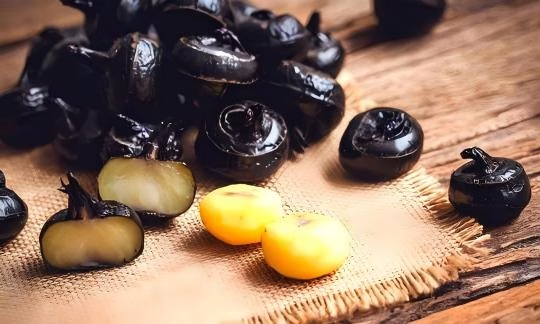Water chestnuts, with their crisp texture, are also known as “underground pears.” Their slightly sweet flavor adds a touch of crispness and counteracts the richness of meat dishes.
Although they are a root vegetable with a high starch content, they are lower in calories than typical carbohydrates. They are rich in phosphorus, which promotes growth and development and maintains physiological functions.
Water chestnut benefits: Rich in phosphorus and potassium, high nutritional value.
Water chestnuts are underground bulbs of an aquatic herb that grows in ponds. Because of their “horse hoof” appearance and chestnut-like taste, they are also called “earth chestnuts.”
After peeling the water chestnut, the white flesh inside is crispy and slightly sweet. It contains fiber, various vitamins and minerals, and a large amount of water.
Because of its high phosphorus content, it promotes growth and development and maintains physiological functions. It’s also high in potassium, which helps lower blood pressure, quench thirst, promote urination, and prevent edema.
For this reason, some people use water chestnuts as a folk remedy for high blood pressure. However, it’s important to consult a doctor and follow their instructions if you have any related health conditions.
Water chestnut recipe: Perfect with ground meat, it’s also delicious in sweet dishes and soups.
Water chestnuts are seasonally divided into “early-maturing” and “late-maturing” varieties. The former, which are available from November to December, are oblate, dark-skinned, and have snow-white flesh.
The latter, available from December to March, have thicker, purple-red skin and tender, crispy flesh.
They’re often paired with ground or minced meat in dishes like “braised lion’s head” and “pearl meatballs,” adding a crunchy texture and providing fiber. They’re also delicious when used directly in stir-fries or stews.
The traditional Cantonese delicacy “horse tuck cake” is made from water chestnut starch called “water chestnut powder.” The most authentic preparation results in translucent golden squares with water chestnut diced in the center, but now there are a variety of variations available.
It can also be cooked into a sweet soup. Peel and cut the water chestnuts into pieces, then add white fungus, red dates, and other ingredients, along with rock sugar or brown sugar.
Water Chestnut Selection, Storage, and Processing Tips
Buying Tips
Water chestnuts are usually available in both peeled and unpeeled varieties. Unpeeled varieties are generally cheaper and last longer. When purchasing, look for the following:
· The appearance should be intact, free of holes infested by insects.
· Firm to the touch, not mushy.
· Peeled water chestnuts: Avoid those that are soft, slimy, yellowish or black, or have an unpleasant odor. Choose vacuum packaging for more stable quality.
[Storage]
Skinned water chestnuts: Wrap in newspaper and refrigerate. They can be stored for approximately 1-2 weeks. Do not freeze to prevent damage to the flesh. Do not eat if the flesh turns black.
Peeled water chestnuts: Soak in boiled water with a little lemon juice and refrigerate, changing the water regularly daily. They can be stored for approximately 3-4 days.
[Preparation]
Peeled: It is recommended to peel the water chestnuts before eating. Wash the skin and use a paring knife to cut off the top and bottom ends, then use a paring knife to peel the skin. Peeled water chestnuts can be soaked in water to prevent oxidation and blackening, or blanched in boiling water for 20 seconds, then drain and set aside.
Chop: Place in a plastic bag or ziplock bag and smash the water chestnuts with the back of a kitchen knife. You can also cut directly into strips or dices with a knife.


Leave a Reply